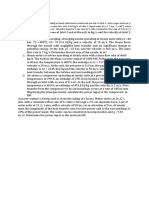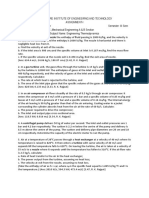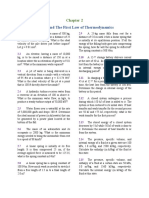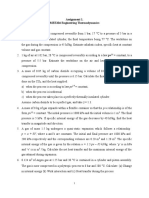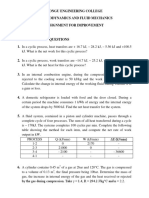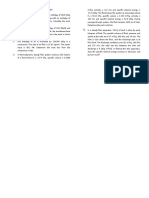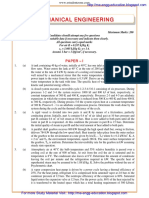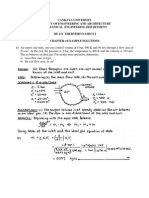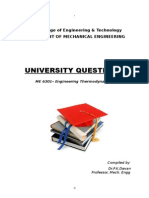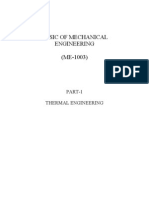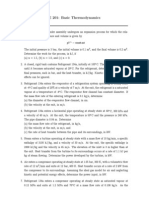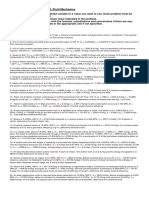0% found this document useful (0 votes)
27 views9 pagesExercise Chapter 3
The document contains 5 problems related to fluid mechanics. Problem 1 asks to determine the inlet pressure of a water jet nozzle given the outlet diameter, discharge rate, and outlet pressure. Problem 2 asks to determine the power output of a steady flow open system given properties at the inlet and outlet. Problem 3 asks to determine the mass flow rate of compressed air given the inlet and outlet conditions and power input. Problem 4 asks to determine the heat transfer rate of a steam turbine given properties and the power output. Problem 5 asks to determine the change in pressure of a liquid flowing through a piping system given properties and heat loss.
Uploaded by
Lang sunhengCopyright
© © All Rights Reserved
We take content rights seriously. If you suspect this is your content, claim it here.
Available Formats
Download as PDF, TXT or read online on Scribd
0% found this document useful (0 votes)
27 views9 pagesExercise Chapter 3
The document contains 5 problems related to fluid mechanics. Problem 1 asks to determine the inlet pressure of a water jet nozzle given the outlet diameter, discharge rate, and outlet pressure. Problem 2 asks to determine the power output of a steady flow open system given properties at the inlet and outlet. Problem 3 asks to determine the mass flow rate of compressed air given the inlet and outlet conditions and power input. Problem 4 asks to determine the heat transfer rate of a steam turbine given properties and the power output. Problem 5 asks to determine the change in pressure of a liquid flowing through a piping system given properties and heat loss.
Uploaded by
Lang sunhengCopyright
© © All Rights Reserved
We take content rights seriously. If you suspect this is your content, claim it here.
Available Formats
Download as PDF, TXT or read online on Scribd
/ 9
